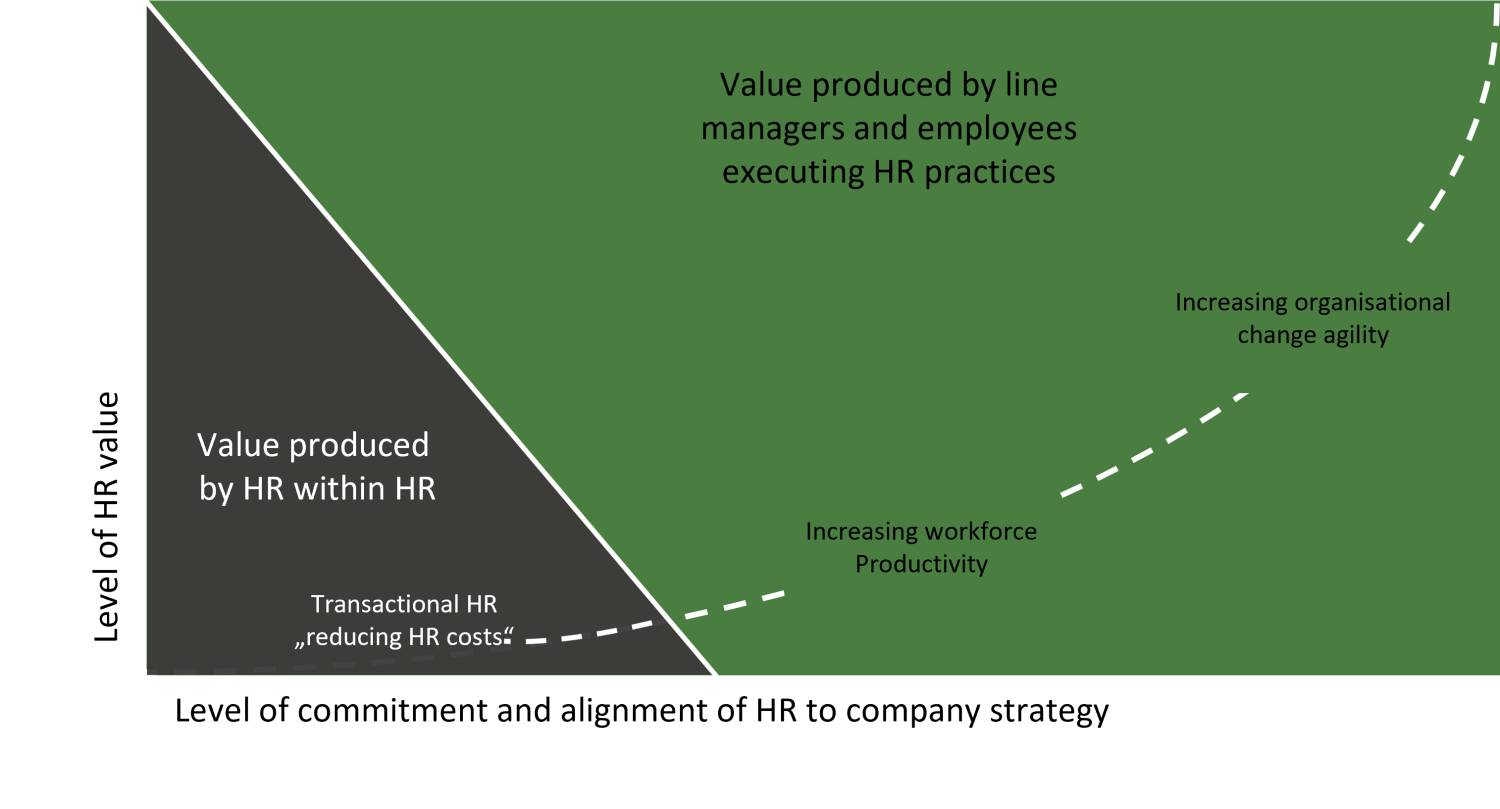4 min read
Many consulting firms focus on streamlining transactional HR with pure cost focus – perceiving HR as a well-oiled delivery machine.
Changing the playing field
Changing the playing field: Most value is generated where HR provides processes, tools and coaching — but line management has the accountability to execute. A thorough evaluation involves all people management processes and looks rather for top line potential (not only focusing on the HR function itself). All organisations are unique and an analysis should always be context sensitive
The cheaper the better approach
During cost cutting/lean projects many organisations hire large consulting firms to analyse different supporting functions (including HR). Their approach is rather straightforward. They view the HR function as a well-oiled machine and filter out 80% of the value creation potential; areas like performance management, most development activities, talent management, strategic workforce planning, employee engagement, etc. are not emphasised. Their focus is purely on economising headcounts, costs per paycheck and streamlining transactional HR without context sensitivity. The main message is: ‘The cheaper the better!’
The top line potential is very high and this normally makes the difference — making companies successful & competitive.
But looking only at transactional/administrational structures and processes doesn’t create much value. As shown in the graph, most value is generated in the upper right corner – where HR sets up the processes and provides tools to be executed by line management. The top line potential is very high and this normally makes the difference — and companies successful and competitive.
A thorough evaluation has to involve all people management processes – regardless of who is performing them – and it needs to look (beside bottom line) mainly for top-line potential. This means process efficiency is less interesting than the impact a process has – using high value metrics rather than old world adherence reporting is key. You can run a process in the most lean and efficient way but still generating bad results.
Different steps in each organisation
On top all organisations are unique; they are in different steps of their life cycles and face different challenges. For example, if your annual growth is 15%, HR has to be staffed 1 to 2 years in advance to manage this growth. This would not be considered in a pure cost cutting exercise. Furthermore, many organisations have structures that require a business partner in smaller units, which could make the whole group seem overstaffed.
But you cannot work with 0.15 FTEs. In addition, the staffing of the HR function is also very much dependent on the maturity level of line management and IT systems – hardly anyone takes that into account.


